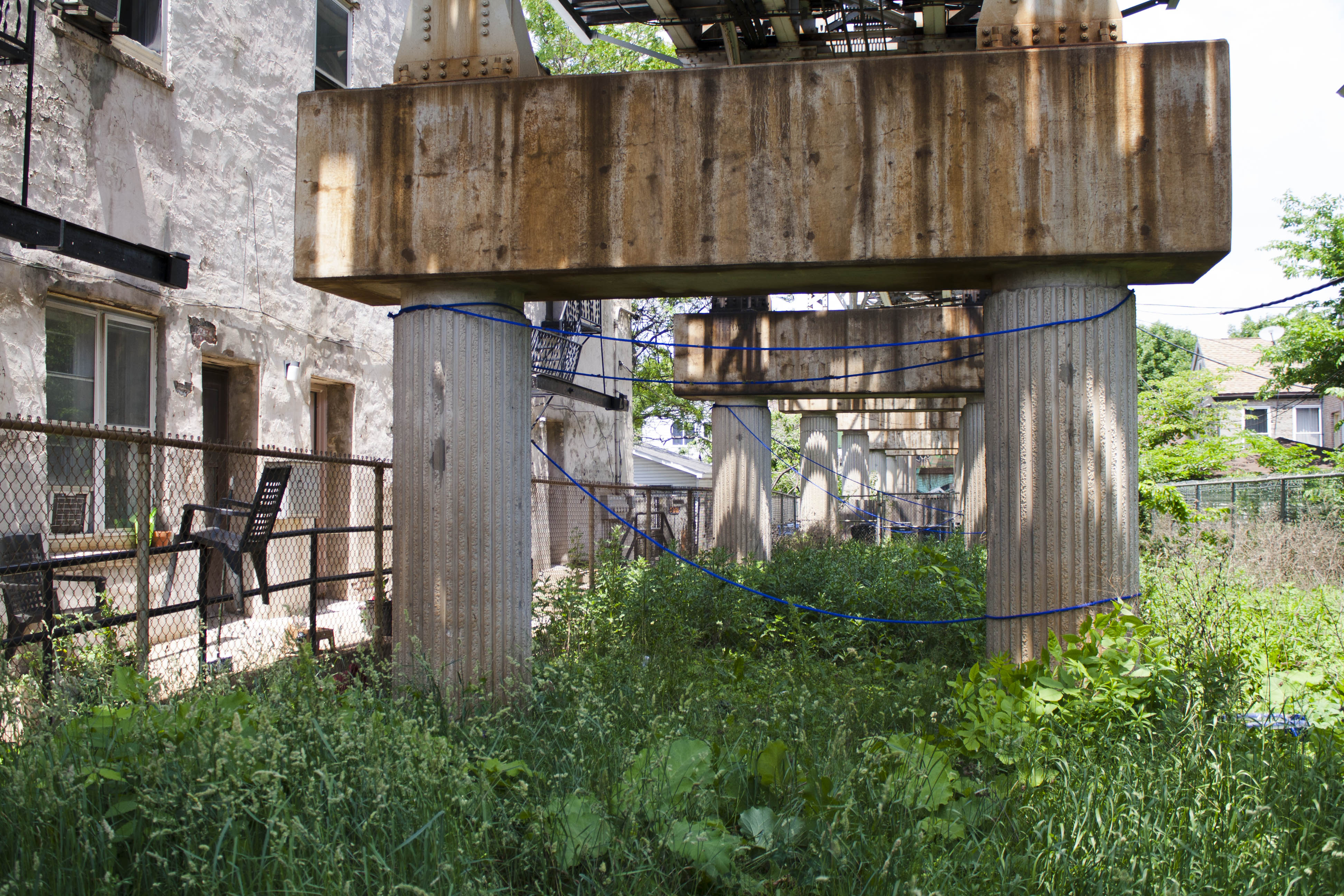Stumble Chicago
Temporary and ephemeral interventions throughout Chicago2018-2019
This curatorial experiment integrates art installations with Chicago’s cityscape to offer urbanites chance encounters with creative gestures. By situating art outside the institutional framing of a gallery or museum environment, this curatorial experiment proposes art viewing as an everyday exercise and strives to engage audiences that might otherwise never seek it out.
Participating Artists: Jaqueline Surdell, Óscar González-Díaz, Erin Smego, Darryl Terrell, Anna Showers-Cruser, Alex Peyton Levine
Jaqueline Surdell
Urban Contours, June 2018


Erin Smego
Fast Parallels, January 2019


Darryl Terrell
Get Home Safely, October 2018As a 6’6 gender nonconforming (GNC) person of color (POC), Terrell employs extra awareness when in public spaces because his body marks him as a target. The three phrases Terrell disributes throughout the city reflect the hyper-vigilance and interpersonal support the POC and GNC community enact while navigating public spaces. These heartwarming phrases embody the concerted care shared amongst Terrell’s community while simultaneously exposing the violence and ignorance they experience which has forged this language of protection and comfort.
Anna Showers-Cruser’s work for Stumble was a sculptural intervention in March 2020 titled Imprint. Imprint was made in the artist’s Mckinley Park studio directly overlooking MAT Asphalt, a manufacturing plant built in 2018 without community notice or consent, prompting the formation of Neighbors for Environmental Justice. Imprintlived for 24 hours at a site equidistant between the park’s (currently dormant) community garden and the looming asphalt silos. If every movement leaves a mark, how might we leave a sign to care for someone else who comes behind us?
In a form loosely based on ancient cairns (rock formations made by hikers to mark a safe path) Imprint bore witness with impressions of touch and connection. Fingerprints and nails were suspended in concrete and grout, with cast miniature chains, medicine bottles, dried flowers, and silicone sweets tucked into its hollows. A section of silicone chain links created a transient tether between the work and the snow.

Óscar González-Díaz
Recording Strips, March 2018
Based in Chicago but originally from Mexico, González-Díaz is disturbed by the broadening political divide and rising racial tensions between his home country and his country of residence. In the midst of the heated debate surrounding immigration in the U.S., Gozález-Díaz examines the social, economic and racial makeup of his rapidly gentrifying neighborhood of Logan Square and its effect on the local Latino community. He developed adhesive strips which were applied to storefronts throughout the neighborhood. Designed to be responsive to the environment and to collect passing debris, these simple, sticky strips trace the comings and goings of clientele. By locating his strips on storefronts associated with gentrification—coffee shops, book stores, high-end smoke shops—as well as establishments run by the Latino community—joyerías, dollar stores, cafeterias—González-Díaz steps into the role of sociologist, tracking the shifting community’s economic and social activities in a gesture reminiscent of the magnifying glass held to the Latino community by I.C.E. and the federal government.




Alex Peyton-Levine
Flower Bomb, January 2018


